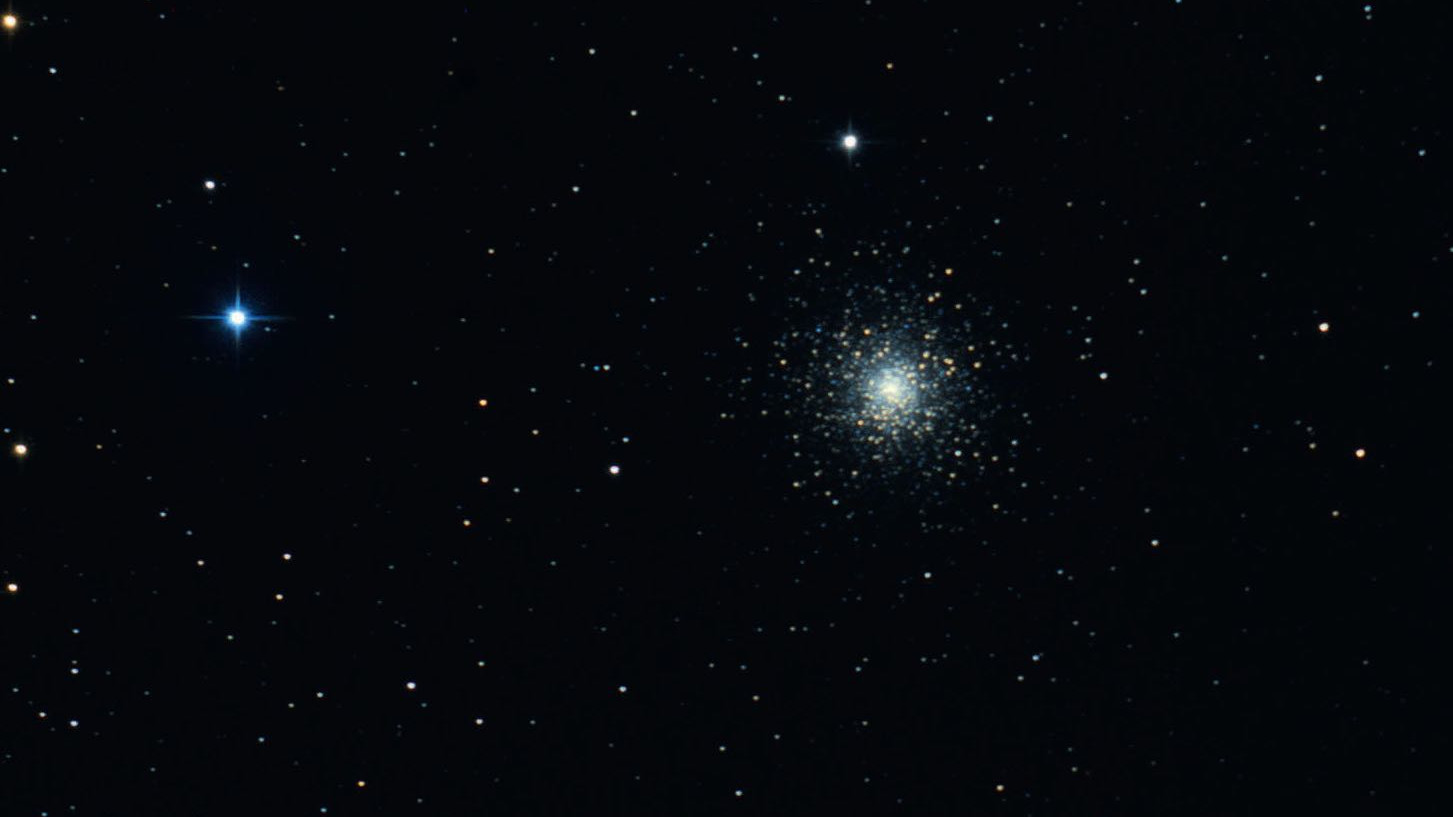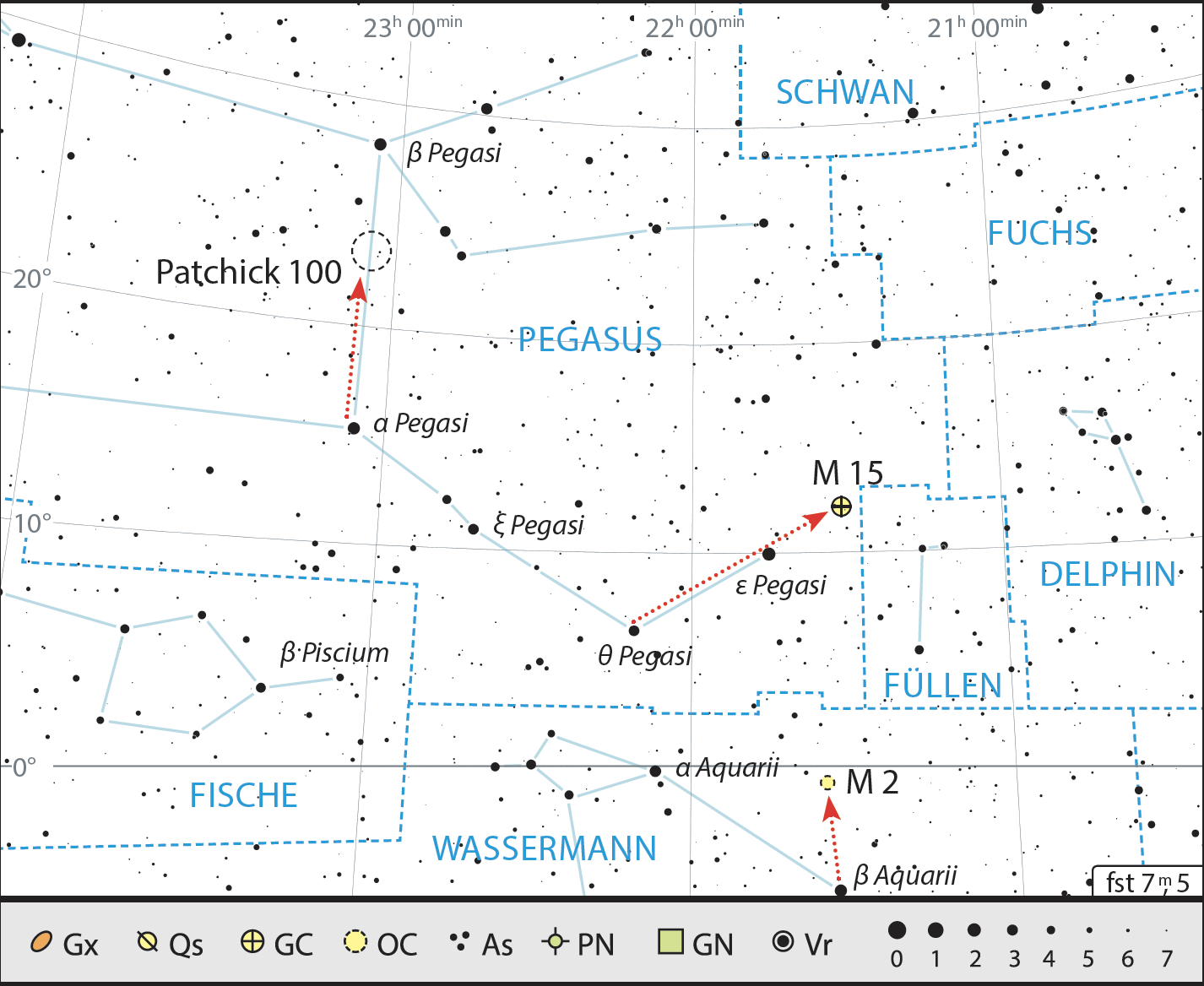The huge emptiness of Pegasus
Besides the globular cluster known as Messier 15, huge Pegasus has several asterisms and binary stars to offer.
 The highlight of Pegasus: globular cluster Messier 15. Marcus Degenkolbe
The highlight of Pegasus: globular cluster Messier 15. Marcus DegenkolbeAlthough it is one of the largest constellations by area, Pegasus offers few targets for binoculars. The only way to overcome this is to cross some boundaries and break some old habits.
Lonely highlight among siblings
A single Messier object appears to have lost its way in Pegasus’ vastness: globular cluster M15 is easy to find from θ and ε Pegasi: following 4° along an extended line from the two stars in a north-westerly direction leads us directly to a bright round ball of haze. This is surrounded by a magnitude 6 star 0.5° to the east and a magnitude 7.6 star directly to the north.
Not far away, but already across the constellation boundary into Aquarius, shines M15’s heavenly brother, globular cluster M2. This does not differ a great deal from the former, but a closer comparison reveals that it is a little less bright and has a slightly oval shape. M2 is located just 5° north of β Aquarii.
 We need to cover great distances on this binocular tour, in order to find interesting objects around the constellation of Pegasus. J. Scholten
We need to cover great distances on this binocular tour, in order to find interesting objects around the constellation of Pegasus. J. ScholtenMiniature dolphin
The science of astronomy has always looked for real objects that exist as a physical entity – there was no place for beautifully or curiously shaped asterisms. But why not let your imagination run wild? After all, the constellations that are familiar to us today were also created in this way.
When we pan from α to β Pegasi, for example, two-thirds of the way between them, we come across an approximately 1° large structure, which immediately reminds you of the constellation of Delphinus. Six stars with a brightness of between magnitude 6.8 and 8.1 form a miniaturised copy of the celestial marine mammal, which was catalogued as asterism Patchick 100, named after its discoverer.
Twice the fun
Now, let's be honest: binary stars should be observed with an apo at maximum magnification – and not at 8 times magnification through hand-held binoculars! But why not? Many of these twin suns can be found with binoculars – and those who want to avoid shaking can of course also use a tripod or rest their binoculars on their car roof, for example, in order to fully exploit the optics’ performance.
This opens up many pearls in this group of objects, including a handful that are to be found in Pegasus. A good example is ε Pegasi or Enif, already mentioned as a useful starting point for locating M15, whose magnitude 2 main star has a fainter companion that can be found a good 2' to the north-west.
Author: Kay Hempel / Licence: Oculum-Verlag GmbH
